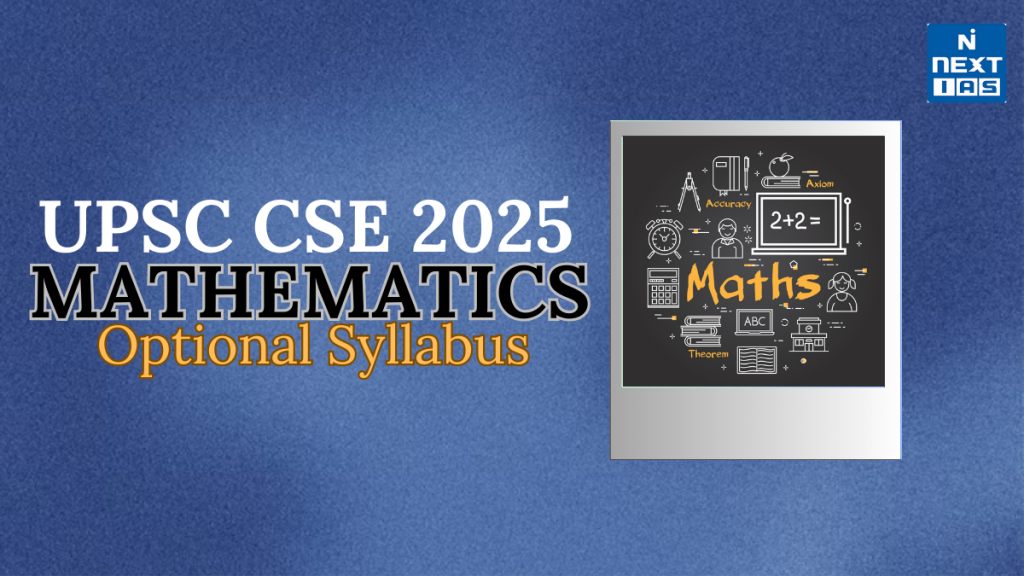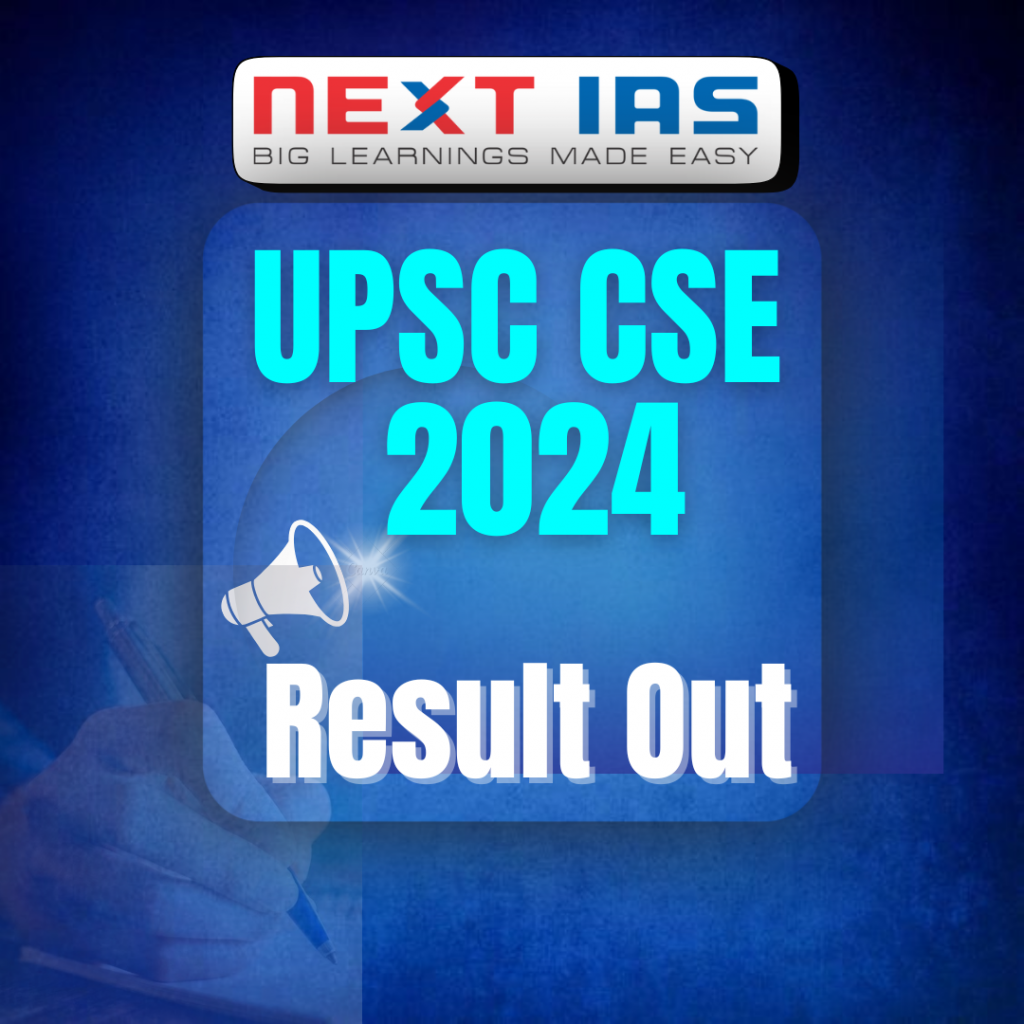
The Mathematics Optional subject for the UPSC Civil Services Examination is a popular choice among aspirants with a strong affinity for mathematics, especially those from backgrounds like engineering, science, and even economics. Its well-structured and logical framework, paired with a systematic approach to complex concepts, makes it an appealing option for candidates aiming to score well in the exam. This article aims to study in detail the UPSC Maths Optional syllabus, offering effective preparation strategies and insights into both pure and applied branches of mathematics.
About Mathematics Optional Syllabus
- The Mathematics Optional syllabus for the UPSC Mains exam covers a wide range of topics, including linear algebra, calculus, differential equations, analytical geometry, and more.
- This subject is ideal for candidates who possess a strong aptitude for mathematics and have a deep interest in the subject.
- One of the key benefits of choosing Mathematics as an optional subject is its well-defined, static syllabus, which makes preparation more structured and predictable.
- Familiarity with the syllabus is a crucial step in preparing for the UPSC Civil Services Examination, as it allows candidates to focus their efforts more effectively.
- Moreover, a deep understanding of mathematics not only aids in excelling in the exam but also provides a strong foundation for pursuing advanced studies in fields like pure mathematics, applied mathematics, and theoretical physics.
UPSC Maths Optional Syllabus for Paper 1
The UPSC CSE Mathematics Optional Paper 1 carries a total weightage of 250 marks. The syllabus is divided into two sections: Section A and Section B. Section A covers topics such as Linear Algebra, Calculus, and Analytic Geometry, while Section B includes subjects like Ordinary Differential Equations, Vector Analysis, and Dynamics and Statics. These topics are carefully structured to build a comprehensive understanding of both theoretical and applied aspects of mathematics.
Paper 1 Syllabus
- Linear Algebra: Vector spaces over R and C, linear dependence and independence,subspaces, bases, dimension; Linear transformations, rank and nullity, matrix of a linear transformation. Algebra of Matrices; Row and column reduction, Echelon form, congruence’s and similarity; Rank of a matrix; Inverse of a matrix; Solution of system of linear equations; Eigenvalues and eigenvectors, characteristic polynomial, Cayley-Hamilton theorem, Symmetric, skewsymmetric, Hermitian, skew-Hermitian, orthogonal and unitary matrices and their eigenvalues.
- Calculus: Real numbers, functions of a real variable, limits, continuity, differentiability, mean value theorem, Taylor’s theorem with remainders, indeterminate forms, maxima and minima, asymptotes; Curve tracing; Functions of two or three variables: limits, continuity, partial derivatives, maxima and minima, Lagrange’s method of multipliers, Jacobian. Riemann’s definition of definite integrals; Indefinite integrals; Infinite and improper integrals; Double and triple integrals (evaluation techniques only); Areas, surface and volumes.
- Analytic Geometry: Cartesian and polar coordinates in three dimensions, second degree equations in three variables, reduction to canonical forms, straight lines,shortest distance between two skew lines; Plane,sphere, cone, cylinder, paraboloid, ellipsoid, hyperboloid of one and two sheets and their properties.
- Ordinary Differential Equations: Formulation of differential equations; Equations of first order and first degree, integrating factor; Orthogonal trajectory; Equations of first order but not of first degree, Clairaut’s equation,singularsolution. Second and higher order linear equations with constant coefficients, complementary function, particular integral and general solution. Second order linear equations with variable coefficients, Euler Cauchy equation; Determination of complete solution when one solution is known using method of variation of parameters. Laplace and Inverse Laplace transforms and their properties; Laplace transforms of elementary functions. Application to initial value problems for 2nd order linear equations with constant coefficients.
- Dynamics & Statics: Rectilinear motion, simple harmonic motion, motion in a plane, projectiles; constrained motion; Work and energy, conservation of energy; Kepler’s laws, orbits under central forces. Equilibrium of a system of particles; Work and potential energy, friction; common catenary; Principle of virtual work; Stability of equilibrium, equilibrium of forces in three dimensions.
- Vector Analysis: Scalar and vector fields, differentiation of vector field of a scalar variable; Gradient, divergence and curl in cartesian and cylindrical coordinates; Higher order derivatives; Vector identities and vector equations. Application to geometry: Curves in space, Curvature and torsion; SerretFrenet’s formulae. Gauss and Stokes’ theorems, Green’s identities.
UPSC Maths Optional Syllabus for Paper 2
The UPSC CSE Mathematics Optional Paper 2 is divided into two sections. Section A includes topics such as Modern Algebra, Real Analysis, Complex Analysis, and Linear Programming, while Section B covers subjects like Partial Differential Equations, Numerical Analysis, Computer Programming, and Mechanics and Fluid Dynamics. This arrangement ensures a balanced approach to both abstract mathematical theory and practical applications.
Paper 2 Syllabus
- Algebra: Groups, subgroups, cyclic groups, cosets, Lagrange’s Theorem, normalsubgroups, quotient groups, homomorphismof groups, basic isomorphism theorems, permutation groups, Cayley’s theorem. Rings, subrings and ideals, homomorphisms of rings; Integral domains, principal ideal domains, Euclidean domains and unique factorization domains; Fields, quotient fields.
- Real Analysis: Real number system as an ordered field with least upper bound property; Sequences, limit of a sequence, Cauchy sequence, completeness of real line; Series and its convergence, absolute and conditional convergence of series of real and complex terms, rearrangement of series. Continuity and uniform continuity of functions, properties of continuous functions on compact sets. Riemann integral, improper integrals; Fundamental theorems of integral calculus. Uniform convergence, continuity, differentiability and integrability for sequences and series of functions; Partial derivatives of functions of several (two or three) variables, maxima and minima.
- Complex Analysis: Analytic functions, Cauchy-Riemann equations, Cauchy’s theorem, Cauchy’s integral formula, power series representation of an analytic function, Taylor’s series; Singularities; Laurent’s series; Cauchy’s residue theorem; Contour integration.
- Linear Programming: Linear programming problems, basic solution, basic feasible solution and optimal solution; Graphical method and simplex method of solutions; Duality. Transportation and assignment problems.
- Partial differential equations: Family of surfaces in three dimensions and formulation of partial differential equations; Solution of quasilinear partial differential equations of the first order, Cauchy’s method of characteristics; Linear partial differential equations of the second order with constant coefficients, canonical form; Equation of a vibrating string, heat equation, Laplace equation and their solutions.
- Numerical Analysis and Computer programming: Numerical methods: Solution of algebraic and transcendental equations of one variable by bisection, Regula-Falsi and Newton- Raphson methods; solution of system of linear equations by Gaussian elimination and Gauss-Jordan (direct), GaussSeidel (iterative) methods. Newton’s (forward and backward) interpolation, Lagrange’s interpolation. Numerical integration: Trapezoidal rule, Simpson’s rules, Gaussian quadrature formula. Numerical solution of ordinary differential equations: Euler and Runga-Kutta methods.
Computer Programming: Binary system; Arithmetic and logical operations on numbers; Octal and Hexadecimalsystems; Conversion to and from decimal systems; Algebra of binary numbers. Elements of computer systems and concept of memory; Basic logic gates and truth tables, Boolean algebra, normal forms. Representation of unsigned integers, signed integers and reals, double precision reals and long integers. Algorithms and flow charts for solving numerical analysis problems. - Mechanics and Fluid Dynamics: Generalized coordinates; D’ Alembert’s principle and Lagrange’s equations; Hamilton equations; Moment of inertia; Motion of rigid bodies in two dimensions. Equation of continuity; Euler’s equation of motion for inviscid flow; Stream-lines, path of a particle; Potential flow; Two-dimensional and axisymmetric motion; Sources and sinks, vortex motion; Navier-Stokes equation for a viscous fluid.
Download UPSC Maths Optional Syllabus PDF
Our team has compiled the complete UPSC Maths Optional Syllabus in a detailed and easy-to-read PDF format. Click the link below to download the UPSC Maths Optional Syllabus PDF.
UPSC Maths Optional Exam Pattern
| UPSC Maths Optional Paper 1 | 250 Marks |
| UPSC Maths Optional Paper 2 | 250 Marks |
| UPSC Maths Optional Duration | 3 Hours Each |
UPSC Maths Optional Syllabus 2025 Preparation Strategy
To prepare effectively for the UPSC Maths Optional Syllabus, the following points need to be noted:
- To ensure that you develop a deep understanding of each topic in the UPSC Maths Optional syllabus, rather than just memorizing facts.
- To set aside dedicated time for consistent revision to reinforce concepts and retain information. Practicing with previous year papers and mock tests is also crucial.
- To work on presenting your answers effectively by practicing answer writing. Analyze the scripts of toppers or seek feedback from mentors to improve your technique.
- To aim to develop a logical approach to solving various types of questions, which will be more useful during the exam.
- To maintain a separate notebook for all important formulas, theorems, and key concepts. Make it a habit to revise this regularly to keep crucial information fresh.
- To practice solving problems regularly to avoid making basic mistakes during the exam. The more you practice, the fewer errors you’ll make under exam pressure.
| Related Courses & Test Series |
| Mathematics Optional Foundation Course |
| Mathematics Optional Advance Course |
| Mathematics Optional Test Series |
In conclusion, the UPSC Mathematics Optional subject offers a unique combination of theoretical rigor and practical applications, making it a rewarding choice for aspirants. Not only does it provide an opportunity to excel in the examination, but it also deepens one’s understanding of core mathematical concepts and their relevance in various fields, such as physics, engineering, and economics.
| Other Related UPSC Optional Syllabus |
| UPSC Economics Optional Syllabus |
| UPSC Geography Optional Syllabus |
| UPSC History Optional Syllabus |
| UPSC Sociology Optional Syllabus |
| UPSC Anthropology Optional Syllabus |
| UPSC PSIR Optional Syllabus |
Frequently Asked Questions (FAQs)
Is Mathematics a good optional for UPSC?
Yes, Mathematics is considered a good optional for UPSC, especially for candidates with a strong mathematical background. It offers a structured and predictable syllabus, making it easier to plan preparation. Moreover, it provides a solid foundation for candidates interested in fields like engineering, physics, and economics.
Is Mathematics optional scoring in UPSC?
Mathematics can be a highly scoring optional in UPSC if you have a strong grasp of the concepts and practice regularly. The subject is objective and its answers are often precise, which can lead to higher scores compared to other subjects. However, it requires dedicated preparation and consistency.






